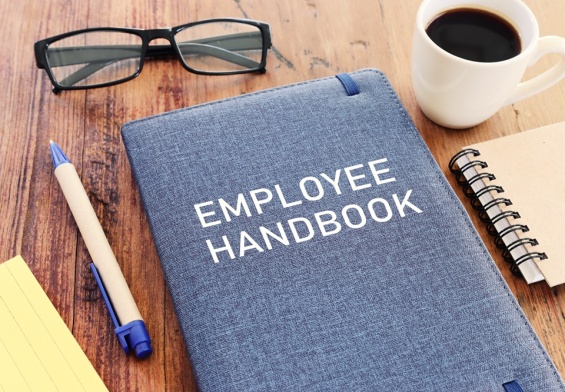What is paternity leave? The answer is simple: time off from work that allows fathers to bond with their newborn, adopted, or foster child, similar to maternity leave. Some employers offer paid leave, while others follow state or federal guidelines that may provide unpaid but job-protected leave.
Many expecting fathers wonder how long paternity leave lasts, whether FMLA paternity leave applies to them, and if fathers get paid paternity leave. Below, we explain your rights, options, and the steps to take when planning for paternity leave.
How Long is Paternity Leave?
How long is paternity leave? It depends on federal, state, and employer policies. Under the Family and Medical Leave Act (FMLA), eligible fathers can take up to 12 weeks of unpaid, job-protected leave.
FMLA covers employees who:
- Work for an employer with 50+ employees within a 75-mile radius
- Have worked for 12 months (not necessarily consecutive)
- Have completed at least 1,250 hours in the past year
However, not all workers qualify for FMLA paternity leave. If you work for a smaller employer or don’t meet the hours requirement, you may need to rely on state laws, company policies, or paid time off (PTO) to take leave.
If you don’t qualify for FMLA paternity leave, options may include:
- State-mandated paid family leave (available in certain states)
- Employer-provided paid paternity leave
- Using PTO, vacation, or sick days if permitted by your company
Do Fathers Get Paid Paternity Leave?
Do fathers get paid paternity leave? Where you work and your employer’s policy influences the answer here. Federal law doesn’t require paid paternity leave, but several states and companies offer financial support.
State-Mandated Paid Paternity Leave
Some states provide Paid Family Leave (PFL), which allows new fathers to receive partial wage replacement. For example:
- New Jersey offers up to 12 weeks of paid leave through the New Jersey Family Leave Insurance (NJFLI).
- New York provides up to 12 weeks of partially paid leave at 67% of a worker’s average weekly wage.
- California offers 8 weeks of partially paid leave under the Paid Family Leave Act.
Employer-Provided Paid Paternity Leave
Some employers offer paid paternity leave as part of their benefits package. This is more common in large corporations, tech companies, and law firms. If your company provides paid leave, the length and compensation vary—some offer two weeks, while others provide up to three months of full or partial pay.
Using PTO or Vacation Time
If your employer doesn’t provide paid paternity leave, you may be able to use PTO, sick leave, or vacation days to cover the loss of income while bonding with your child.
Example:
- If your state offers Paid Family Leave, you might receive 60-80% of your paycheck for a set period.
- If your company allows it, you could combine PTO with state benefits to maintain full income during leave.
Is Paternity Leave Required?
Is paternity leave required by law? Federal law does not mandate paid paternity leave, but FMLA provides unpaid, job-protected leave for eligible employees. However, some states require employers to offer paid family leave.
The states mentioned above, New Jersey, New York, and California are some of these states. Even in states that don’t require paternity leave by law, many employers offer paid time off to attract and retain talent.
Paternity Leave in NJ
Paternity leave in NJ is among the most comprehensive programs in the country. Fathers can receive wage replacement for up to 12 weeks through NJ Family Leave Insurance (NJFLI). However, wage replacement alone does not guarantee job protection.
To qualify for paid paternity leave in NJ in 2025, an employee must earn at least $303 per week for 20 weeks or a total of $15,200 over the past 12 months. The claim must be filed within 30 days of starting leave. NJFLI allows for leave to be taken in one continuous period or over time.
How to Apply:
- Notify your employer as soon as possible.
- Gather required documents, including a birth certificate or adoption papers.
- Submit a claim for NJFLI benefits within the required timeline.
The Benefits of Paternity Leave
Taking paternity leave benefits fathers, children, and employers. Studies show that fathers who take leave develop stronger bonds with their children, contribute to a more equal distribution of caregiving, and experience lower stress levels when returning to work.
Fathers who take paternity leave often report better work-life balance and stronger family relationships. In addition, employers that offer paternity leave see higher job satisfaction and employee retention rates.
How to Request Paternity Leave
Requesting paternity leave requires proper planning. The first step is reviewing your employer’s leave policy to see if paid or unpaid leave is available. If your company does not offer paid leave, check whether state benefits apply.
If you plan to use FMLA paternity leave, provide your employer with at least 30 days’ notice before your expected leave date. Some employers may require official forms or birth documentation as part of the process.
For fathers who do not qualify for FMLA, options may include using PTO, vacation days, or state-funded paid leave programs. Planning finances in advance can help cover any gaps in income.
Planning for Paternity Leave
Understanding what paternity leave is and how it works allows fathers to plan out their time off. Whether using FMLA paternity leave, state benefits, or employer policies, planning ahead facilitates a smoother transition into parenthood while protecting financial stability and career security.
Resources:
https://dol.ny.gov/PaternityLeave
https://www.dol.gov/agencies/whd/fmla/faq




